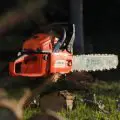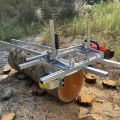Whether you like it or not, purchasing firewood is a necessity if your house has a fireplace or wood stove. However, when you go wood shopping without any experience, it’s easy to get scammed. There are many names for the different sizes of firewood that stores sell. One of the more common terms is “cord of wood.”
In this article, you’ll learn exactly what a “cord of wood” is, along with all you need to know about sizes, price, weight, and more.
Table of Contents
- What Is a Cord of Wood?
- What Is the Volume of a Cord of Wood?
- How to Measure a Cord of Wood
- How Much Does a Cord of Wood Weigh?
- How Much Is a Cord Of Wood?
- How Long Does a Cord of Wood Last?
- FAQs (Frequently Asked Questions)

What Is a Cord of Wood?
When you purchase firewood in stacks, the phrase “cord of wood” is frequently used. You might not be aware of it, but firewood vendors use it as a measurement standard to figure out how much wood to charge for your purchase. Stacked firewood is frequently referred to as “face cord,” “stove cord,” “rick cord,” “bush cord,” or “standing cord.” Customers frequently become perplexed when they buy firewood because of these many phrases.
A typical pile of firewood measures 128 cubic feet, or 8 feet by 4 feet by 4 feet in imperial measurements. Measuring in centimeters, its measurements are W: 122 cm x H: 244 cm x D: 122 cm, or 3.62 m3 in total.
What Is the Volume of a Cord of Wood?
A cord of firewood has an overall volume of 128 cubic feet, or 3.62 cubic meters, as we just established. It’s important to remember that the precise amount of wood placed in a cord can be less than this guideline. Why? Due to the likelihood that air pockets will develop between each piece of firewood.
A cord of firewood may contain no air pockets, yet even so, its volume may be roughly 90 cubic feet. Some vendors would only sell firewood in full cord volumes, although it’s not unheard of for consumers to purchase a third or a half cord.
We don’t suggest purchasing wood in quantities denoted as pickup truckloads, stone cords, or furnace cords if you really want to save money. When purchasing wood, it is always preferable to get a whole cord because these volume metrics are inaccurate.
Another common term is a “rick of wood”, to learn more about them visit our How Much Is a Rick of Wood? guide!
How to Measure a Cord of Wood
When discussing cord of wood measurements, you’ll typically come across the following:
- Full cord
- Face cord
- Sheldon cord
Full Cord
Most suppliers will presume that you require a complete cord of firewood if you don’t specify how much you’ll purchase. It’s advisable to say it precisely as it is to minimize confusion over firewood prices because a full cord measures exactly 4 inches long by 4 inches high by 8 inches deep.
Face Cord
The smallest unit of stacked firewood you may purchase in this metric is the face cord. A face cord’s standard dimensions are four feet high, eight feet wide, and 1.4 feet deep. We can infer from this that face cords only make up a third of the full cord variations.
Sheldon Cord
Expect to receive more firewood than a full or face cord if you purchase a cord of this size. However, keep in mind that each region has a different average size for this category.
How Much Does a Cord of Wood Weigh?
There are a number of variables that can alter the mass of firewood. Whether you purchase a stack of dry wood or freshly cut wood ultimately determines how much they weigh. But generally speaking, a cord of hardwood can weigh up to 5000 pounds, whereas a cord of softwood weighs about 2500 pounds.
How Much Is a Cord Of Wood?
It simply makes sense that there would be a large price variation when comparing the cord of wood cost because not all wood is created equal. A normal cord of firewood might be purchased for as little as $100 or for as much as $500 for the best quality. We would like to point out that the parameters included below are frequently used to establish the average price range.
Location
The location is the most evident element that will impact the costs of purchasing your own firewood. While purchasing firewood in California can cost as little as $100 in places like Central Valley, some vendors in Southern California would offer stacked logs for as much as $480.
Delivery
Getting your wood delivered to your door if you’re not picking it up yourself could raise the price of your order. You will be charged for this in accordance with the delivery’s distance.
Wood Type
Because they can withstand more heat and are better suited for operations involving wood burning, hardwoods like oak and maple cost more than softwoods. Visit our Firewood Identification guide to learn about all the various types of firewood.
Seasoned Wood
Before wood is well-seasoned, it must be stored for at least eight months. It makes sense why it’s pricey given the time span. Freshly cut young wood has a 52 percent water content, whereas seasoned firewood has a moisture content of under 20 percent, making it far more flammable. It will take a year or two for hardwoods to dry, indicating that they were kept in storage for a considerable amount of time.
You might try the semi-seasoned firewood if you’re searching for something more reasonably priced. The sellers only allowed the wood for this variety to dry for six months. Our experts believe it to be a viable solution if you don’t have any other choices, even though it’s not the finest advice for wood burning.
There is also kiln-dried firewood, which may have less moisture depending on how long it has been exposed to heat and the temperature of the kiln. Unfortunately, seasoned wood is less expensive than kiln-dried wood.
Condition
It seems logical that the most expensive wood would be the driest because it can generate the most heat. If you want to burn wood without problems, you should also think about purchasing clean wood.
While a log splitter may always be used to produce thick firewood that is evenly split, manually producing uniform logs is challenging. Unless you have splitters that are more expertly made, like those made by the Champion company. Remember that thicker logs cost more to buy since they burn more easily.
Firewood Storage
Make sure the area where the firewood is being stored has adequate airflow. You might not be aware of it, but seasoning wood requires airflow. Having a sturdy rack that can hold the volume of your logs is also crucial.
For drying purposes, remember to split the wood and arrange it in a crisscross pattern. The logs should also be covered throughout the procedure and placed six feet above the ground in the storage. The wood will become drier and more suitable for burning the longer you store it. While on the topic, visit our How to Stack Firewood guide!
Firewood Heat Value
Did you know that the heat content of each type of firewood varies? However, depending on the quantity of moisture in the log, this value may change. The moisture content needs to be less than 20%, ideally.
As a result, we advise utilizing a moisture meter while purchasing wood. Continuing to burn highly moist logs, such as green firewood, will likely result in more smoke and less heat. Given that it burns for shorter periods of time, using it in your fireplace runs the risk of creosote adhering to the chimney.
How Long Does a Cord of Wood Last?
When used as a home’s main source of heat in the winter, a complete cord of wood normally lasts 6 to 10 weeks. Several variables affect how long wood will last, so you should always have more on hand than you think you’ll need.
FAQs (Frequently Asked Questions)
How much wood is a full cord?
A whole cord of wood measures 8 feet long, 4 feet high, 4 feet wide, or 128 cubic feet in volume. The weight of a whole cord of wood can reach 5,000 pounds.
What does a 1/2 cord of wood look like?
Four feet wide, four feet high, and four feet deep make up half cords of firewood. Each piece of wood in a cord was traditionally cut into lengths of four feet, which the user would subsequently trim to fit a fireplace. Over time, this has evolved into a much more useful convention.
Why is it called a cord of wood?
Since a line, string, or cord was used to tie the wood into a bundle, the term cord was initially used to describe a stack of firewood.





